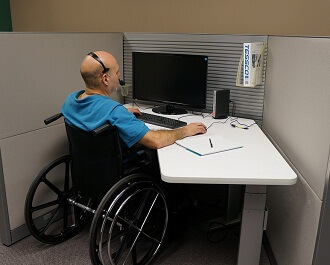Discrimination Arising From Disability: The Causation Test
Discrimination Arising From Disability: The Causation Test

Part 5 of the Equality Act 2010 (EqA 2010) protects individuals in employment, occupational or vocational training against disability discrimination.
Discrimination arising from disability is covered under section 15(1) of the EqA 2010. It occurs where:
- A treats B unfavourably because of something arising in consequence of B’s disability; and
- A cannot show that the treatment is a proportionate means of achieving a legitimate aim.
The tribunal should then apply a two-stage causation test, to determine whether discrimination arising from disability had occurred. The recent tribunal case of Sheikholeslami v University of Edinburgh [2018] held that Section 15 required an investigation of two distinct causative issues:
- Whether A had treated B unfavourably because of an (identified) something; and
- Whether that something had arisen in consequence of B’s disability.
In the case the tribunal (wrongly) described the critical question as whether Professor Sheikholeslami’s refusal to return to her previous role was because of her disability or because of another reason. But it should not have been a question of choosing one or the other – both reasons might be in play if her disability caused her to experience anxiety and stress and an inability to return to the place where she perceived the mistreatment to be located, leading to her refusal. The tribunal had therefore applied a causation test that was too strict.
The tribunal should have asked itself whether Professor Sheikholeslami’s refusal to return had arisen in consequence of, rather than be caused by, her disability. This is a “looser connection” which could potentially include more than one link in the chain.
The EAT’s decision continues its trend of loosening the causal link between the disability and the “something” that arises in consequence of it. The tribunal clearly adopted a black and white approach whereas these cases often involve facts and issues which overlap. The judge suggests that although the cause of the disability might be irrelevant in many cases, there will be cases such as this one where the disability, its cause and its effects are all so interlinked that they will all be relevant to the question of causation.
Where does causation fit into the Tribunal’s overall assessment?
In the case of Pnaiser v NHS England and another [2016] the EAT summarised the proper approach to claims for discrimination arising from disability:
- The tribunal must identify whether the claimant was treated unfavourably and by whom;
- It then has to determine what caused that treatment, focusing on the reason in the mind of the alleged discriminator, possibly requiring examination of the conscious or unconscious thought processes of that person, but keeping in mind that the motive of the alleged discriminator in acting as he or she did is irrelevant;
- The tribunal must then determine whether the reason was “something arising in consequence of [the claimant’s] disability”, which could describe a range of causal links. This stage of the causation test involves an objective question and does not depend on the thought processes of the alleged discriminator;
- The knowledge required is of the disability – not knowledge that the “something” leading to the unfavourable treatment was a consequence of the disability.
Contact our employment law solicitors for advice
If you think you have been the subject of discrimination at work, or if you have received a claim against you for discrimination, then call us today on 03456 381381, or email your details to employment@ibblaw.co.uk.
